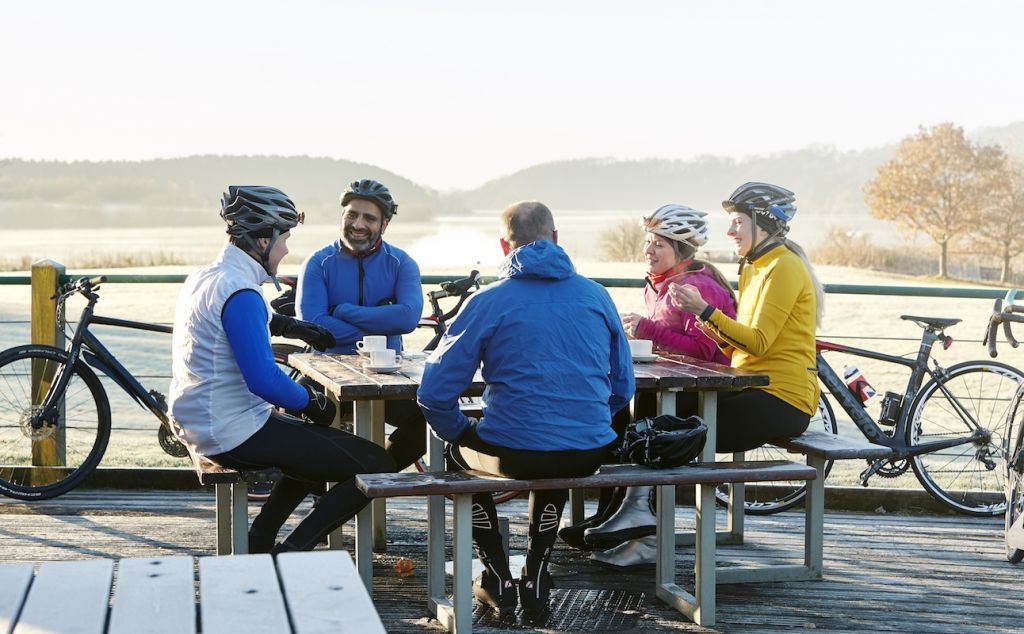Top tips for riding in winter

The arrival of winter shouldn’t stop you cycling if you’re prepared for the weather and riding conditions. Here are our top five tips!
1. Get your clothing right
First things first. Arguably the most important tip for great winter weather cycling is getting your gear right. The correct thermal, windproof and waterproof clothing will keep your body so dry and warm you’ll barely notice the cold temperatures.
A full set of winter clothing can seem like a large expense, but by choosing carefully and layering up you can build up a range of clothing which will see you through a range of temperatures.
Winter clothing essentials: waterproof jacket, thermal bib tights, thermal / wicking undervest, windproof gilet / jersey, thermal socks, windproof / thermal gloves, clear glasses.
Winter clothing optional: overshoes, under-helmet cap / headband, scarf, winter-specific shoes.
2. Keep your lights bright
We’re seeing more and more riders using lights all year round in daylight as a way of highlighting their presence to other road users. In winter, this is even more important as overcast winter days can get very gloomy.
Small, light and super-bright rechargeable LED lights are now easy to find and fairly cheap. Make sure your lights are fully charged (or that you have fresh batteries) before every ride to avoid being caught out on short winter days.
3. Use mudguards
Anyone who has ever tried to ride directly behind someone who doesn’t have mudguards in the winter will know exactly how much muck is sprayed up by a rotating bike tyre! Even if you don’t use them the rest of the year, it’s a good idea to fit mudguards for winter riding to minimise spray, dirt, and a wet backside.
4. Prepare for punctures
It’s a sad fact that the worse the weather, the more likely you are to get a puncture. It’s as if wet road conditions create some kind of magical lubrication for thorns, shards of glass and sharp pieces of flint to stab their way into your inner tubes.
Be prepared by opting for tyres that offer a degree of puncture protection and are harder wearing. Continental Gatorskins are a perennial favourite for winter riding, but many other manufacturers offer similar models. They can’t prevent every puncture, but, as long a you keep your tyres properly inflated, they’ll certainly improve your chances. Keep a couple of inner tubes and a working pump with you in case you’re unlucky.
5. Plan your ride
Think ahead and be prepared. Plan a sensible route to match the predicted weather forecast, take a (charged) phone with you, some money in case of emergencies, and make sure you’re well fed and watered before you set out. And of course, plan your cafe stop!
Need more tips? We asked some cycle commuters for their advice on winter riding:




